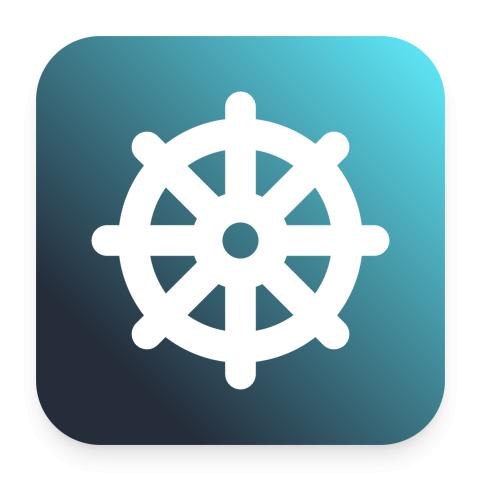Cisco Application Centric Infrastructure (ACI) is a cutting-edge SDN solution designed to simplify, automate, and optimize the management of data centers. ACI offers a holistic view of the network, enabling IT teams to configure and manage networks based on application needs rather than traditional networking approaches that rely on static configurations. By adopting ACI, organizations can benefit from automation, enhanced security, scalability, and compliance, making it an invaluable asset for industries with strict regulatory requirements. As the demand for skilled professionals grows, Cisco ACI training becomes crucial for network engineers who aim to stay ahead in this evolving landscape.
Cisco Application Centric Infrastructure
ACI is built on a policy-driven framework that allows for automated network provisioning and management. It simplifies complex data center environments by using a centralized controller that defines policies and ensures application performance is optimized without manual intervention. At the core of Cisco ACI is the Application Policy Infrastructure Controller (APIC), which controls and automates the entire network.
ACI allows for seamless integration with third-party systems and applications, giving organizations the flexibility to manage their network infrastructure efficiently. By abstracting network policies from the underlying hardware, ACI supports rapid deployment of applications and helps IT teams respond quickly to business changes.
Achieving Financial Regulatory Compliance with Cisco Controllers
One of the primary challenges faced by the financial industry is adhering to strict regulatory requirements. Regulatory bodies such as the SEC, FINRA, and PCI DSS demand that financial institutions maintain a secure and segmented network environment. With Cisco ACI, organizations can easily meet these regulations by providing granular control over network traffic and segmentation.
Cisco ACI ensures that sensitive data is kept separate from other network traffic, allowing financial institutions to isolate customer data, transactions, and confidential communications. This capability is vital for maintaining compliance with regulations designed to protect customer data and ensure secure communications. Cisco ACI Training emphasizes how ACI’s ability to enforce security policies centrally can streamline regulatory compliance, reducing the burden on IT teams.
Additionally, ACI’s automation and orchestration capabilities enable businesses to generate real-time compliance reports and logs, which are critical for auditing purposes. Network administrators can quickly demonstrate compliance to auditors, ensuring they stay on the right side of the law without incurring penalties.
Network Segmentation for Enhanced Security
Network segmentation is one of the most powerful features of Cisco ACI. Through segmentation, organizations can isolate different parts of their network to ensure that sensitive data remains protected and that unauthorized access is prevented. Cisco ACI allows administrators to create tenant-based segmentation, where multiple tenants (business units, departments, or teams) operate within the same physical infrastructure while being logically isolated.
This capability is particularly important for businesses that need to protect customer data, intellectual property, and other sensitive information. Segmenting traffic by application or user type ensures that unauthorized access to critical data is minimized. The combination of micro-segmentation, security contracts, and policy-based enforcement makes Cisco ACI a powerful solution for organizations focused on securing their network environments.
ACI’s ability to dynamically adjust policies and segmentation in response to threats provides an additional layer of security. Administrators can easily quarantine compromised devices or networks without impacting the entire infrastructure, thereby ensuring business continuity.
Compliance Reporting
A significant part of adhering to regulatory standards is having the ability to generate and manage compliance reports. With Cisco ACI, compliance reporting becomes a streamlined process. ACI provides real-time analytics and reporting tools, enabling businesses to track all network activities, enforce security policies, and meet regulatory standards.
ACI’s telemetry and monitoring features allow IT teams to gather insights on network performance, potential threats, and policy enforcement. These logs and reports can be used to demonstrate compliance during audits, proving that all security and segmentation policies are enforced as required. As businesses continue to navigate complex regulatory landscapes, the automation of compliance reporting will become increasingly valuable, reducing the effort and time needed to satisfy auditors.
Automation and Orchestration for Increased Efficiency
Automation is at the heart of Cisco ACI. Its robust automation capabilities reduce the manual configuration of network devices and policies, allowing for faster deployment of applications. Administrators can define application requirements, and ACI automatically configures the necessary network resources to meet those demands.
By orchestrating application deployment and network policies, ACI enables organizations to reduce human error, minimize downtime, and ensure a consistent network environment. Network engineers can automate workflows, making network changes faster and more accurate, which is particularly important in dynamic data center environments.
For professionals looking to stay ahead in the networking industry, Cisco ACI Online Training provides the technical know-how to fully leverage these automation and orchestration capabilities, ensuring optimized and efficient network management.
Enhanced Security with Cisco ACI
ACI takes network security to the next level by integrating security features into its policy framework. With ACI, security policies can be enforced at the network level and applied consistently across the entire infrastructure. This helps in minimizing vulnerabilities and preventing unauthorized access.
Additionally, Cisco ACI supports advanced security measures such as micro-segmentation and the implementation of security contracts. These features ensure that only authorized devices and users can access critical applications or data. ACI also provides visibility into network traffic, allowing administrators to detect threats in real time and respond quickly.
Scalability and Performance
ACI’s architecture is designed to support the growing needs of modern enterprises. It offers high scalability by allowing organizations to add resources or tenants without compromising performance. Whether an organization is expanding its data center or deploying new applications, ACI can easily scale to meet those demands.
The integration of automation and orchestration ensures that as the network scales, performance remains optimal. Organizations can reduce overhead costs by scaling their network infrastructure in line with business needs without over-provisioning resources.
Conclusion
Cisco ACI is transforming how organizations manage and secure their data centers. Through its automation, orchestration, and segmentation capabilities, ACI ensures that businesses can meet regulatory requirements while maintaining optimal performance and security. For network engineers and IT professionals, Cisco ACI Course offers a comprehensive understanding of how to implement and manage ACI in real-world scenarios, making it an essential part of any IT skill set.






